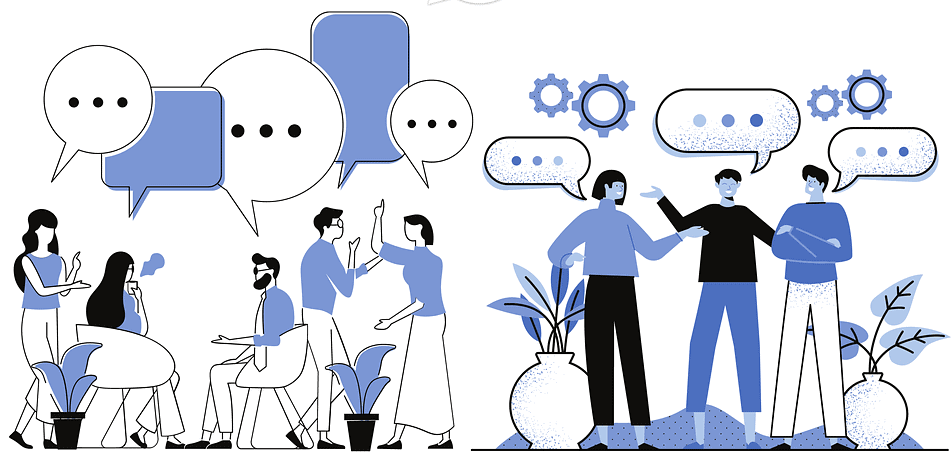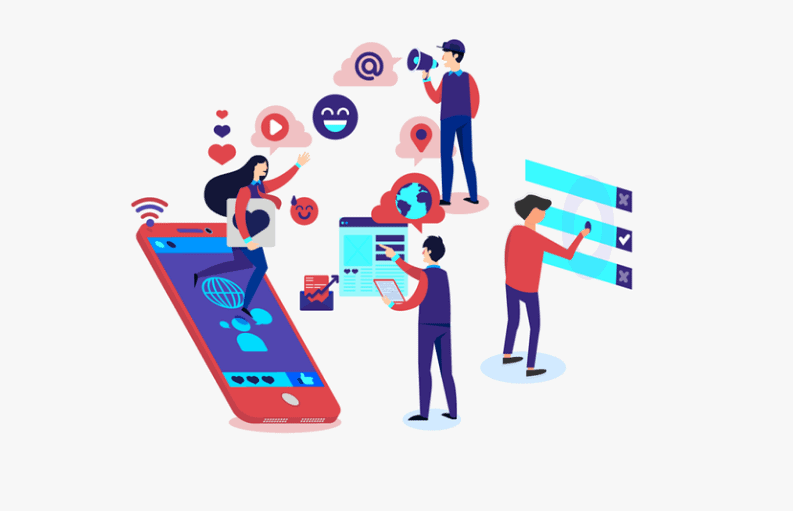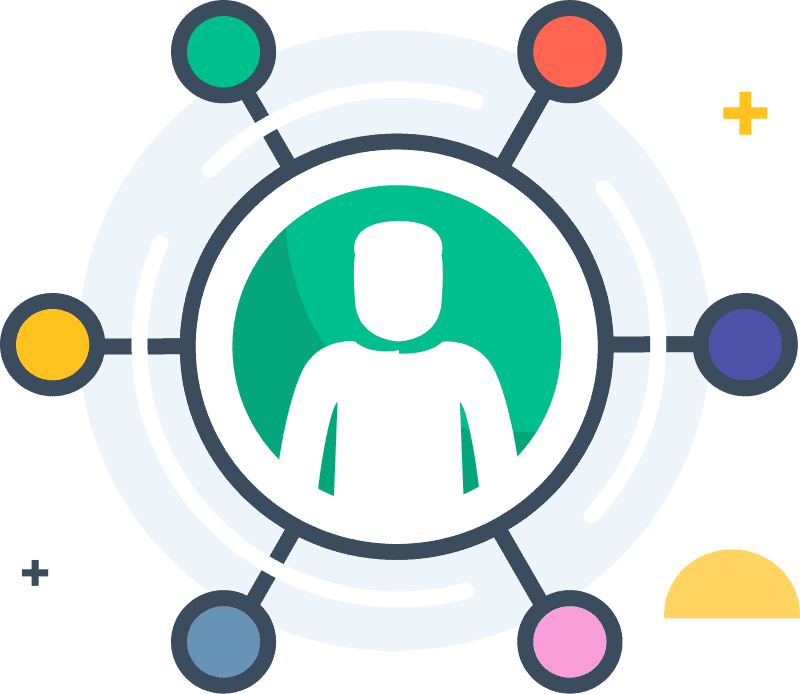On-demand messaging has changed customer communication choices. Chatbots are being used in increasing sectors to engage customers continuously.
Business chatbots improve customer service and consumer experience. Chatbots are changing business-customer interactions.
“Artificial Intelligence (AI) will be a mainstream customer experience investment in the next couple of years,” says Gartner. 40% will employ virtual assistants and 47% will use chatbots for customer service.
AI has transformed company communication with customers and internally. Machine learning and flexible automated business communications require AI.
Chatbots will evolve from simple user questions to predictive analytics-based real-time dialogues.
Chatbots Trends and Statistics to Follow in 2024
Key Chatbots Statistics
More sectors are using chatbots to automate their procedures. Multiple company verticals use them to provide outstanding customer service and a delightful experience.
Bots will change business-to-customer communication. Conversational disruption may reduce and motivate businesses to favour chatbots for user engagement.
Bot solutions will expand its reach soon. Chatbots are most useful for quickly responding to clients, which can improve business KPIs like average resolution time and first contact resolution.
Discover the trends in the chatbot industry using research-based statistics. In order to deploy virtual assistants successfully, businesses can take advantage of statistical insights.
- By 2025, Conversational AI will generate USD$1.3 billion in revenue, expanding at a 24% CAGR (Cognizant)
- There is an estimated $112 billion in eCommerce transactions that will be handled by chatbots by 2023. (Juniper Research)
- The cost of developing bots and chatbots will exceed that of traditional mobile apps for more than half of enterprises in the coming years. (Gartner)
- The use of bots is predicted to be 75-90% of all queries by 2024. (CNBC)
- Top industries benefitting from chatbots include real estate, education, healthcare, travel and finance. (Service Bell)
- Customer support costs can be reduced by 50% with chatbots. (Invespcro.com)
Chatbots: Trends, Statistics and Future Outlook

Despite its robustness, the chatbot ecosystem is growing rapidly. Chatbots are helping startups and Fortune 500 companies speed up.
Let’s examine the latest chatbot trends and their future applications.
1. Chatbots will be more human alike

Global Market Insights estimates that by 2024, the chatbot market would be worth over $1.3 billion. Thus, chatbots will dominate business communications.
NLP bots utilise sentiment analysis and predictive analytics to intelligently interpret conversations and query intent. Despite enterprise adoption of AI technology, chatbot best practises are still difficult to apply.
With machine learning (ML), artificial intelligence (AI), and natural language processing (NLP), firms are designing chatbots that are indistinguishable from humans to meet consumer expectations and address the downsides (NLP).
Conversational AI-enabled chatbots can:
- Improve customer relationships by providing a personalized and tailored customer experience.
- Increase customer loyalty by improving the user experience with your brand.
- Build a satisfied customer base by positively affecting the customer’s perception.
2. Drive chatbot behavior with deep customer insights
Improve user experience by making chatbots more conversational. Sentiment analysis helps chatbots mimic humans.
It is also important to please your customers. To gauge client satisfaction, chatbots might use sentiment analysis.
Customer feedback data can be collected, normalized, and aggregated with chatbots for further analysis.
An enhanced user experience can be achieved by using chatbot sentiment analysis.
- Chatbots record customer conversations and utilise sentiment analysis to identify happy and angry customers.
- Chatbots can adapt to consumer emotions via sentiment analysis.
- The correct team starts a conversation with angry consumers to provide personalised and effective customer service.
3. Use of AI in contact centers

Chatbots Magazine claims that “deploying a conversational chatbot can lower customer service costs by up to 30%”.
Businesses that switch from IVR to AI chatbots can save money. Bots can handle simple tasks like password changes, balance requests, appointment booking, etc.
Some examples of common uses are as follows:
- The repetitive nature of routine calls can make bots a valuable resource in reducing the number of human agents required and improving employee attrition rates.
- It can be expensive to employ staff 24 hours a day, 7 days a week in your contact center. Multi-line support increases headcount needed to handle customer inquiries.
4. Voice bots are becoming mainstream
Voice is the future!
“Ok Google, what’s in my calendar today?” is a common morning phrase. Forbes predicts “more than 50% of all searches will be voice-driven”. Conversational banking is growing.
Voice-driven chatbots help you give customers a seamless experience. According to Accenture, “Digital users prefer messaging solutions that have voice and text-based interfaces”.
What is the reason for the popularity of voice bots?
- Voice bots engage clients with automated, intelligent contact, making text monotonous.
- Voice-enabled bots give customers accurate data insights. It also improves real-time information.
- Voice bots improve customer service by personalising.
Conversational bots use AI to help via text and voice. Automating consumer engagement will benefit insurance, travel, and financial services in 2024.
Banks use consumer data and new data to personalise communication. In a competitive market, brands must turn leads into customers and offer the best customer service. Chatbots will automate 90% of banking interactions by 2023.
5. Customer experience (CX) will drive chatbot adoption

AI chatbots help businesses change the way they talk to customers. Following the trends in the chatbot industry will help you connect with your customers in a great way in a time when social messaging apps are becoming more popular.
A company that makes $1 billion a year in sales can expect an average increase in revenue of $823 million over three years if they improve the customer experience.
Businesses can improve customer service by automating customer support tasks, such as lead generation, customer feedback, FAQs using the best AI chatbot platform.
How can chatbots enhance customer service?
- Typically, chatbots respond to customers within 30 seconds or less.
- Our AI bots assist customers 24 hours a day, 7 days a week with information-based questions and reduce the number of support tickets we receive.
- Customer engagement can be improved with chatbots during busy hours.
Companies can use chatbots to communicate with their customers based on their customer experience.
6. Chatbots as growth drivers for messaging platforms

Conversational commerce is preferred because it gets people to use chatbots to shop online. Messaging platforms give businesses a new way to do things, like improve their brand and give the best customer service.
It will become easier for brands to interact with their customers by using messaging apps in the future. Moreover, these platforms will integrate with different business functions and have strong bot capabilities.
It is possible for businesses to drive sales and revenue with messaging platforms that have chatbot capabilities
- Marketing engagement: Customers like businesses that can help them with bots. 47% of users would be okay with buying things through a bot. The statistics on chatbots for marketing show that most buyers think that chatbots are the best way to talk to businesses.
- Customer support: Most chatbots can keep customers interested when the support team is busy or not available by answering their simple questions. With AI, bots can learn more and better ways to answer.
- Sales & lead generation: By qualifying prospects across your website and social media channels, chatbots can automate your sales and lead generation processes.
7. Automated payments will be made by chatbots
Chatbots are changing a lot about how businesses talk to customers, run campaigns to get more leads, and handle payments.
Sixty-seven percent of US millennials say they will buy products and services from brands that use chatbots, according to Chatbots Magazine.
Using live chat or Facebook Messenger apps, businesses will be able to automate simple payments. The customer is happy, and customer satisfaction goes up, because the process is done right away.
MasterCard has also made a chatbot that helps customers pay for things. The bots can answer questions about the balance of an account, help customers set up alerts for when payments are due, and collect final payments from customers.
Even though protecting data and information is important, it is still in its early stages. Making chatbot use cases will take some time to catch up on.
In the same way, a chatbot pricing template can help customers get a quick idea of how much products or services cost without having to talk to a real person.
Accepting payments via Facebook Messenger has the following main benefits:
- Customers can buy directly from Messenger: can be made without leaving the app.
- Trust is a strong word: Credit cards and debit cards are secure with Facebook Messenger.
- Easy scalability: With this technology, your automated Messenger sequences can be sold directly through 24×7 bots.
- Cost-effective: In comparison with traditional channels like live chat or call centers, it is cost-effective
8. AI adoption will be dominated by social media

No longer is social media just for making friends. Over time, it has become a way to share opinions, order goods and services, give reviews, and even contact businesses.
So, businesses have to use chatbots to make it easier for people to talk on these platforms.
On the Facebook Messenger platform, more than 100,000 bots are working.
Chatbots have already been used by businesses in many different industries to help them better understand their customers’ needs and even find better ways to help them.
Quick Links:
- What is ChatGPT and How to use it?
- ChatGPT Boon or a Ban for Academics
- How to Login and Use ChatGPT?
- Facebook Statistics
- Twitter Statistics
- Instagram Statistics
- Apple Statistics
- Social Media Marketing Statistics
Conclusion: Chatbots: Trends, Statistics and Future Outlook in 2024
Chatbots are becoming popular in a wide range of business and consumer applications. As time goes on, automation will make its roots even stronger and solve all the problems that businesses have with chatbots.
If you know a lot about your business, your customers, and all of your needs, and then use chatbots to meet those needs, it will have a big effect on both the customer experience and the customer journey as a whole.

